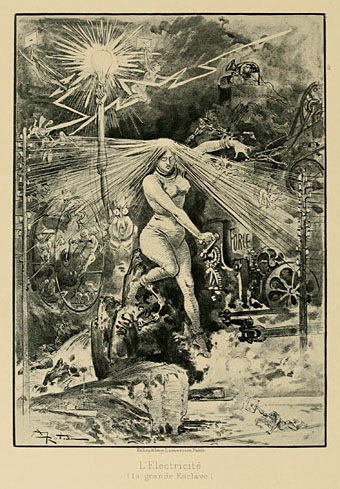
Albert Robida (1848–1926), a French illustrator and writer, might be less well-known today had he not authored several books which attempt to predict what life might be like in the 20th century. He was sufficiently well-regarded in his lifetime to be given the task of imagining “Old Paris” for one of the attractions at that cult event of mine, the Exposition Universelle of 1900. These days his work mostly appears in histories of science fiction as a result of books such as Le Vingtième Siècle: La Vie Électrique, a comic novel published in 1890 that looks at French life in the distant year of 1955. The attitude may be humorous, with a drawing style that resembles the contraptions of William Heath Robinson rendered by Gustave Doré, but some of Robida’s predictions are as prescient as those of HG Wells. The inhabitants of France in the 1950s may still dress like those in the 1890s but they communicate via “Téléphonoscope” while the military wage biological and chemical warfare. The usual fleets of fanciful airships fill the skies; the idea that everyone in the future would be the owner of a flying-machine goes back a long way. Robida also shows submarines, transit tubes connecting cities, and pollution caused by the new technologies.
La Vie Électrique is copiously illustrated so the selection here is a necessarily small sample. Anyone wishing to see the whole book can browse it or download it at the Internet Archive.
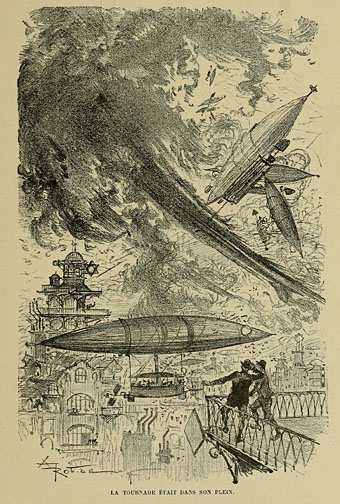
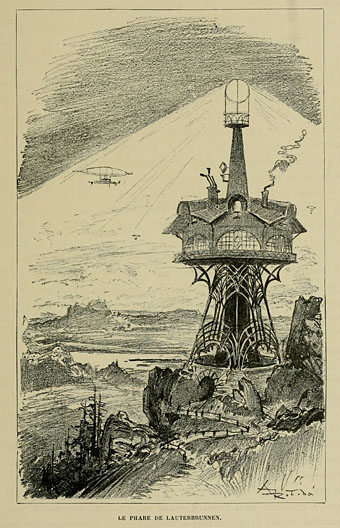
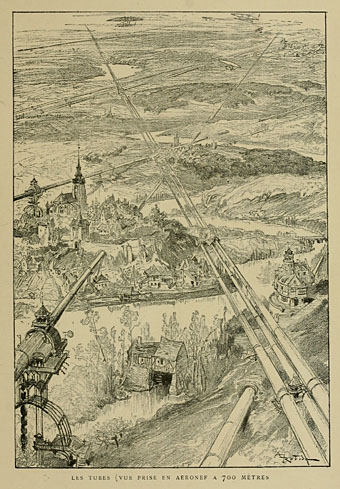
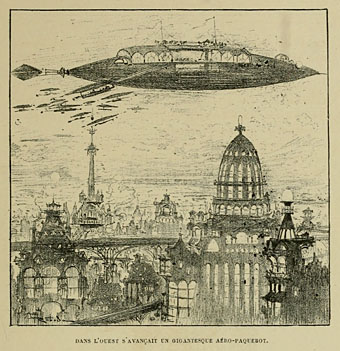
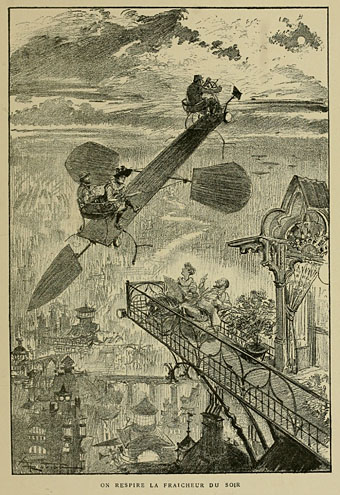
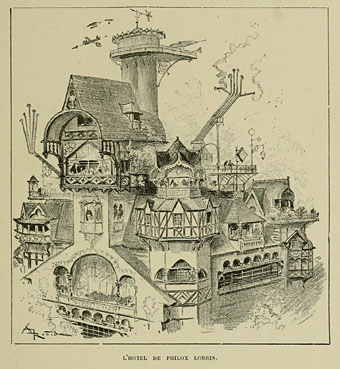
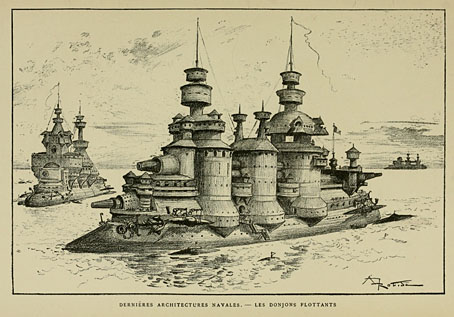
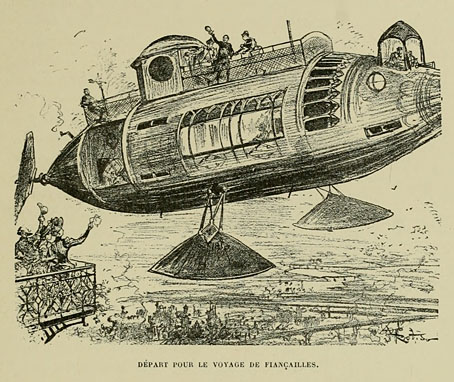
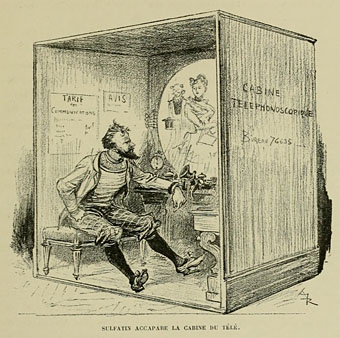
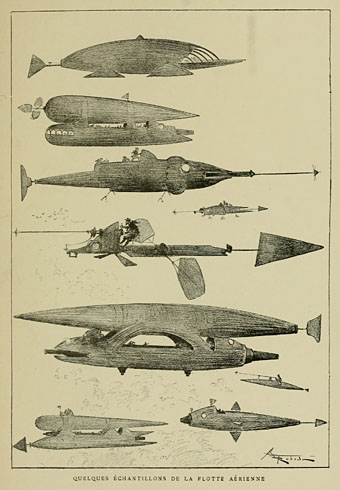
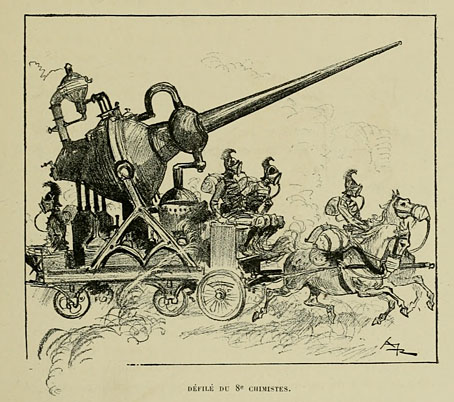
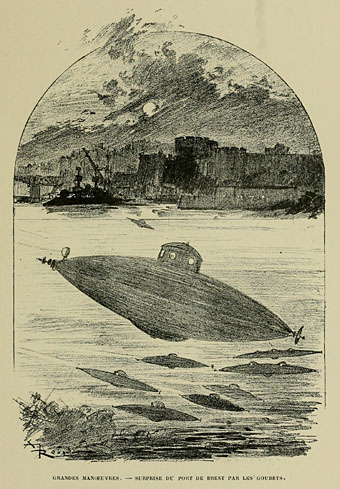
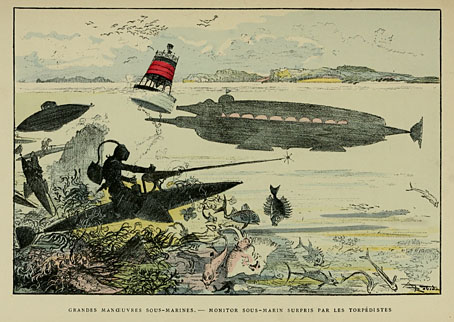
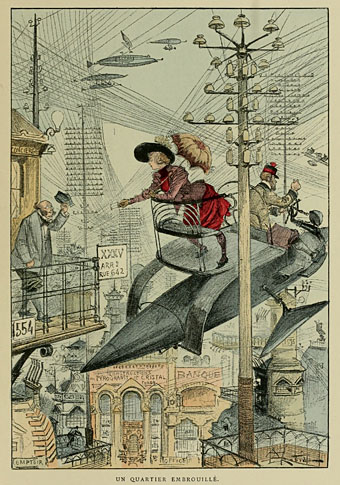
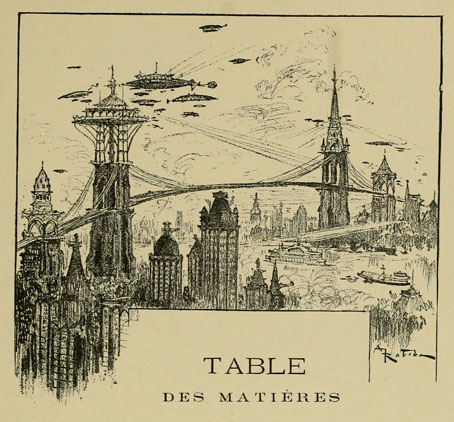
Elsewhere on { feuilleton }
• The illustrators archive
Previously on { feuilleton }
• The Mysterious Explorations of Jasper Morello
• Technology, then and now

Hi John, thanks for unearthing another gem !
Robida was kinda “in the news“ a few months ago, with an exhibition about retrofuturistic themes, called “Futur antérieur”. There is a catalog of it that might interest you, it’s bilingual (french/english) : http://atheles.org/lemotetlereste/carteblanche/futuranterieur/index.html
Thanks for the link. Robida seems to be getting more attention now than he has for years on account of the ongoing steampunk movement. His work is very much a steampunk precursor.